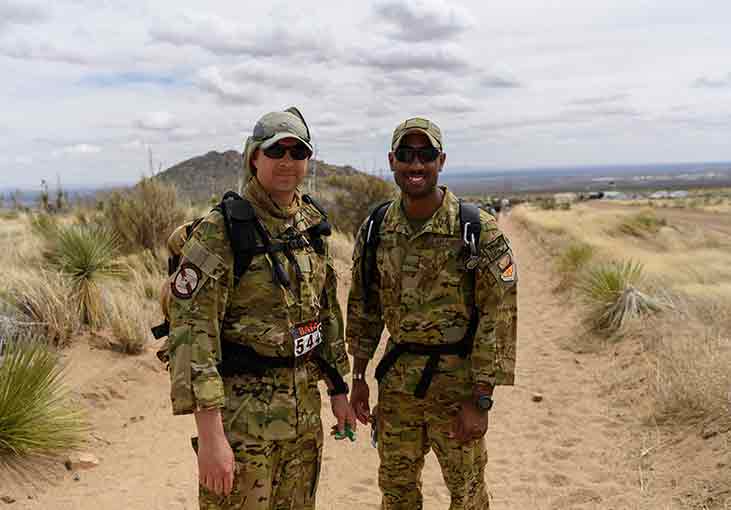After reading how social fitness impacts your brain and overall health, you might wonder how you can use the benefits of strong social connections in your unique position as a Service Member. Especially since your social circle changes every few years and you spend so much time away from your romantic partner and family. But, despite the challenges of military life, when you look at the neuroscience of social connection, you can use this knowledge to form strong bonds with others.
Whether you’re looking to build new relationships thanks to your most recent PCS or aiming to improve your already established relationships, follow HPRC’s evidence-based strategies for enhancing your social fitness.
Include playful elements in your relationships
Playfulness with others is associated with an increase in dopamine, a neurotransmitter that’s linked to motivation, learning, and reward-seeking behaviors. Adding playful elements to the quality time you spend with others can make those times feel rewarding and encourage more social connection. Be creative in how you engage in play with others across TFF domains. For example, you might try a cooking class with your romantic partner or join team-building activities with your teammates. For a bonus boost of serotonin and endorphins, exercise in a social setting such as your local MWR recreation league, go for a hike, play paintball, or spot your battle buddy at the gym. Serotonin plays a key role in such body functions as mood, sleep, digestion, nausea, wound healing, bone health, blood clotting, and sexual desire. And, endorphins are neurotransmitters that can help alleviate pain, lower stress, improve mood, and enhance your sense of well-being.
Playfulness with others is also associated with an increase in oxytocin, often referred to as the “love hormone.” Oxytocin promotes feelings of bonding, trust, and positive social connection and is an important hormone for parent-child bonding. After just a 15-minute period of play with their children, parents’ oxytocin levels increase. Types of play often differ between mothers and fathers: Moms tend to engage in more affectionate play such as gentle pokes, hugs, or kisses. Dads often tend to engage in more “rough-and-tumble” play that’s often physical, exploratory, and exciting. No matter what type of play you engage in with your kids, it can help deepen your bond with them.
Express gratitude
Expressing gratitude is also associated with the release of oxytocin and can help you bond and emotionally connect with others. Recognizing the good you’ve received from someone, savoring it, and expressing appreciation to them can help strengthen that relationship. Make gratitude a daily practice by sending HPRC’s gratitude postcard to those you care about, such as your best friend from a previous duty station or a new neighbor. If you’re just getting started with a gratitude practice, begin with learning about the scientific benefits of expressing gratitude. Then, work on applying strategies for growing your gratitude and try participating in HPRC’s annual #GotMySix challenge.
Develop your communication skills
Several communication strategies such as empathy, social support, and warmth, are associated with a release of oxytocin. For example, after expressing empathy towards strangers, people have a 47% increase in oxytocin and show more generosity towards others. When you receive social support and interpersonal warmth your oxytocin increases. Overall, communicating in your relationships helps you bond with others and seek connection during difficult times. If you’re interested in learning how to improve your communication skills, visit HPRC’s communication toolbox for evidence-based ways to develop 6 communication skills and apply them to your relationships.
Interact with animals
Interacting with animals is also associated with the release of oxytocin and dopamine. After petting a dog, your body releases oxytocin and dopamine, and the levels are higher if it’s your dog versus an unfamiliar dog.
In addition, animals help make interpersonal interactions easier. Strangers are more likely to smile or talk to you when you have a dog with you than when you’re alone or carrying something such as a teddy bear or plant. In terms of courtship, strangers are more likely to give you their number when you're with a dog. And, when it comes to establishing and maintaining friendships, children in families with a dog are more likely to be visited by their friends. Overall, owning a pet can help you meet people, improve your dating life, and help your children be social.
Whether you’re looking to build relationships from scratch or maintain your already established relationships, understanding the neuroscience of social connections can help you take intentional steps to improve your social fitness and performance. Visit HPRC’s social fitness section on HPRC-online.org to learn more.





